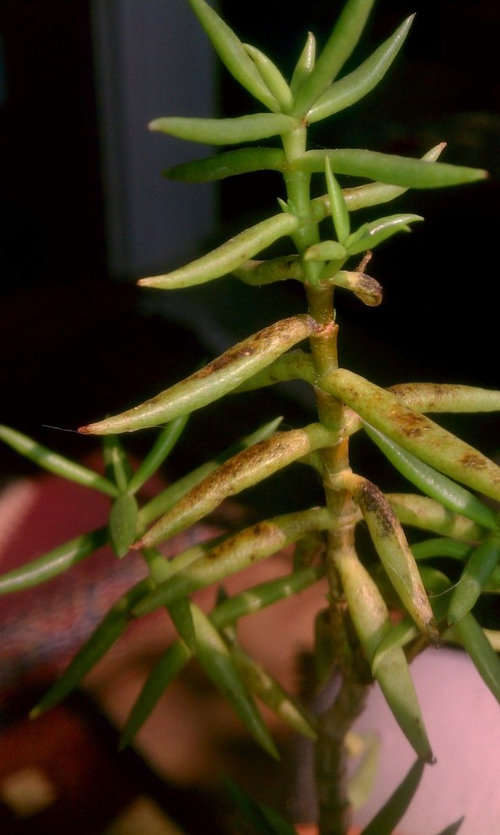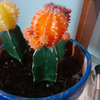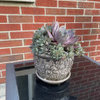What's the funk on my Crassula tetragona?
kwie2011
9 years ago
Just noticed the funky brown "stains" on some of my C. tetragona leaves. Not sure what they are. My best guess would be water stains, but I rarely get the leaves wet when watering.
Background:
Pacific NW - in 4" pot, outside, partial sun and bright shade.
None of my other plants, whether Crassula, other succulent, or tropical plant has any similar marks.
It only appears on a few leaves near the top. Other branches and leaves are ok.
It doesn't wash off readily, and if you can't see it in the photo, the skin of the leaf isn't as smooth where the "stains" are.
The affected leaves might be withering from it, or it might be coincidence that some withered leaves also have the "stain."
It's been in the 90s some days, but dropping into the high 40s some nights
It might've gotten rain splash a few days ago
It has just barely begun to come out of dormancy, and has numerous tiny new branches budding, so it seems to be otherwise healthy.






DavidL.ca
kwie2011Original Author
Related Professionals
Cerritos Landscape Contractors · Concord Landscape Contractors · Little Ferry Landscape Contractors · Weslaco Landscape Contractors · Athens General Contractors · Bryn Mawr-Skyway General Contractors · ‘Ewa Beach General Contractors · Kilgore General Contractors · Shorewood General Contractors · South Windsor General Contractors · Troutdale General Contractors · Huber Heights Decks, Patios & Outdoor Enclosures · Montgomery County Decks, Patios & Outdoor Enclosures · Pecan Grove Decks, Patios & Outdoor Enclosures · Vero Beach Decks, Patios & Outdoor Enclosuresgreenman28 NorCal 7b/8a
kwie2011Original Author
Pallas_Athena
cactusmcharris, interior BC Z4/5
kwie2011Original Author
nomen_nudum
kwie2011Original Author
LilBit7765
nomen_nudum
kwie2011Original Author
kwie2011Original Author
LilBit7765